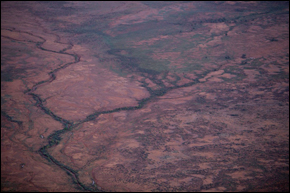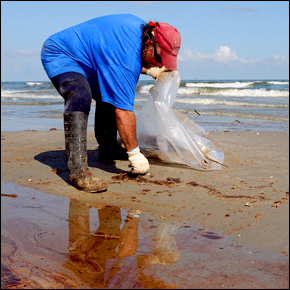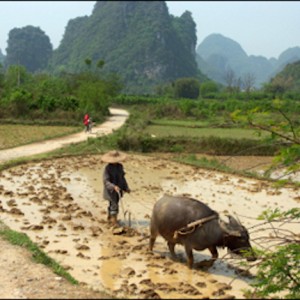Drought in Australia Connected to Snowfall in Antarctica, Researchers Find
Relationship between Australia’s drought and Antarctica’s increased snowfall offers clues to human contribution to global warming.
 Scientists have linked a severe, decades-old drought in Australia to increased snowfall in East Antarctica, the Associated Foreign Press reported.
Scientists have linked a severe, decades-old drought in Australia to increased snowfall in East Antarctica, the Associated Foreign Press reported.
Anthropogenic global warming might play a role in the extreme precipitation shift, according to researchers Tas van Ommen and Vin Morgan.
A so-called “precipitation see-saw” links the Australian drought and Antarctic snowfall. Relatively cool, dry air flows to southwest Australia, providing little rain; while warm, moist air flows to east Antarctica, providing abundant snow.
This link helps explain why rainfall levels have been so low in southwest Australia and snowfall has been so high on the Law Dome in east Antarctica. It also helps clarify the drought’s severity in historical terms, WAtoday reports.
Southwest Australia has seen a 15 to 20 percent decline in winter rainfall since drought began in the 1970s. The impact has been devastating to farmers, industries and citizens within the region.
But the exact cause of the drought and degree of human influence remain unclear. Changes in land use, ocean temperatures, air-circulation and natural variability are also contributing factors.
Though analyzing historical trends could help determine human influence, weather records from the region only date back 100 years, while the oldest tree-ring record—from 350 years ago—is in a site that wasn’t affected by the drought.
Antarctic snowfall records at Law Dome, however, go back much further.
Researchers from the Australian Antarctic Division found that the high snowfall since the over the last three decades at Law Dome was unlike any other in the past 750 years. Current snowfall at Law is of a severity expected only once about every 5,400 years.
Since the unusual snowfall is directly linked to southwest Australia’s weather system, scientists believe the drought is similarly unusual.
These results exemplify the immediate effects climate change can have on water supplies.
United Nations water experts told Reuters that the main impact of climate change will be on water supplies, and competition for the resources may cause conflicts. (Read more about trans-border conflict from Dr. Peter Gleick.)
“The main manifestations of rising temperatures. . .are about water,” Zafar Adeel, chair of UN-Water, told Reuters. “It has an impact on all parts of our life as a society, on natural systems, habitats.”
As research into the Australian-Antarctic see-saw mechanism continues, van Ommen and Morgan will work towards more accurate models and analysis.
“This work underscores the need for long-term records of past climate from sources like ice cores,” lead researcher van Ommen told WAtoday, “and it illustrates the important role that Antarctic climate processes play globally.”
Sources: Associated Foreign Press, WAtoday, Reuters
is a Washington, D.C–based correspondent for Circle of Blue. He graduated from DePauw University as a Media Fellow with a B.A. in Conflict Studies. He co-writes The Stream, a daily summary of global water news.







Leave a Reply
Want to join the discussion?Feel free to contribute!